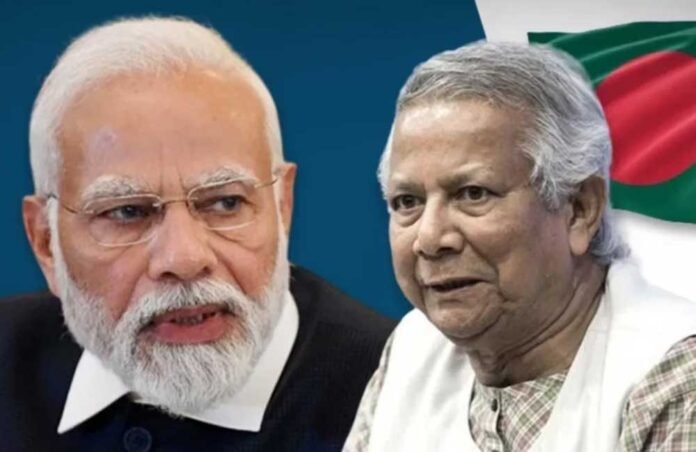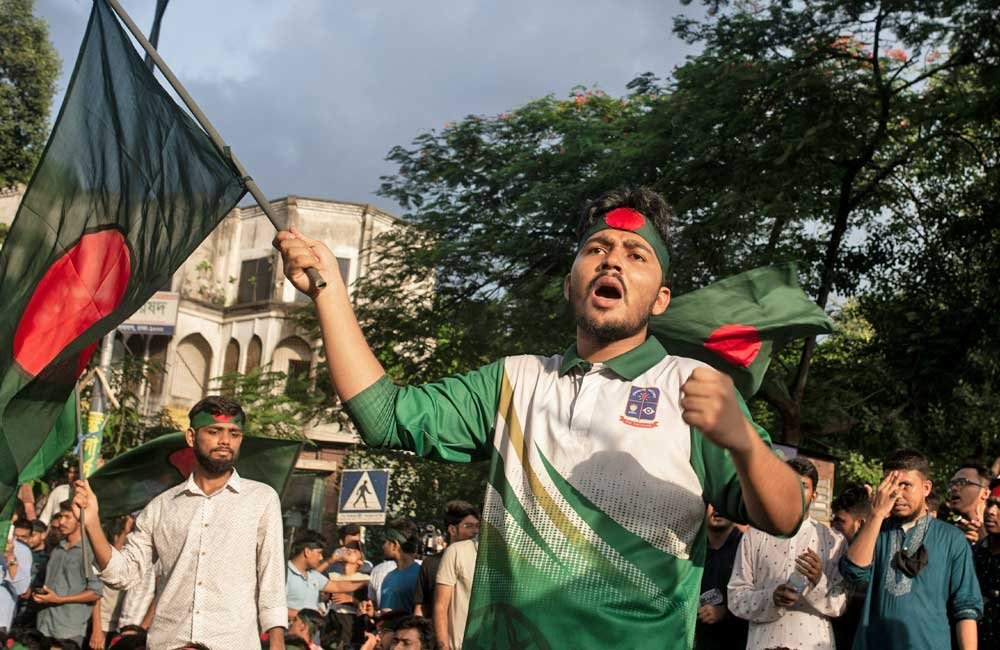In a highly provocative speech, Syed Abdullah Muhammad Taher, a leader of the Jamaat-e-Islami party of Bangladesh, asserted that should India try to intervene in Bangladesh, it would have to “fight off five million youth members of the Jamaat-e-Islami party”. In doing so, he threatened Ghazwa-e-Hind against India.
Notwithstanding the delusional nature of the threat, what has become concerning is the downhill trajectory of the once robust Indo-Bangladesh ties ever since Sheikh Hasina was ousted from power last year. The inauguration of the Mohammed Yunus-led interim government has seen a fundamental reshaping of India’s relationship with Bangladesh.
A new anti-India coalition is emerging in the form of the Bangladesh-China-Pakistan axis. A string of meetings between Pakistan and Bangladeshi top officials is a signal that Bangladesh is trying to reorient the geopolitical equation in South Asia.
Jamaat-e-Islami, an Islamist organisation with a strong pro-Pakistan track record, was banned not only for its questionable nationalist credentials but also for collaborating with Pakistan during and after the liberation war of 1971.
However, the ban was lifted recently. This, however, signals that India, which shares a more than 4,000 km-long border with Bangladesh, will find it hard to deal with the recalcitrant neighbour.
Revival of Anti-India Forces
The 2024 Gen-Z protest in Bangladesh, dubbed the July revolution, was instrumental in toppling the Sheikh Hasina government, which had ruled the country since 2009. The fundamental premise behind the movement was to bring down an ‘oppressive regime’ that was throttling dissent, undermining democracy and turning a deaf ear to the legitimate concerns of the youth. They were successful in their aims, but in bringing down the Hasina regime, the new political forces in Bangladesh created deep concerns for India.
China’s deepening stakes in Bangladesh are a signal that, despite the warmth in the Sino-Indian ties, China remains a strategic threat to India. China’s strong ties with Bangladesh and Pakistan are a manifestation of Beijing’s strategy of encircling India.
One such concern was the revival in the political fortunes of the Bangladesh National Party, whose rule in the period 2001-2006 saw ties between the two countries nose-diving. The second concern is the threat from Jamaat.
Further, the stunning victory of the Jamaat-e-Islami’s youth wing in the Dhaka University student union elections can be considered an indicator that, going forward, India’s security and political concerns vis-à-vis Bangladesh are set to dominate a major portion of New Delhi’s strategic considerations.
Bangladesh-China-Pakistan Axis
Under Mohammed Yunus, the Bangladesh government has been trying to fundamentally reshape its relations with other countries of South Asia. It is in that context that a new anti-India coalition is emerging in the form of the Bangladesh-China-Pakistan axis. A string of meetings between Pakistan and Bangladeshi top officials, followed by a commitment to deepening trade ties coupled with a strong defence partnership, is a signal that Bangladesh is trying to reorient the geopolitical equations in South Asia.
Further, China’s deepening stakes in Bangladesh are a signal that, notwithstanding the resurrection of warmth in the Sino-India ties following the BRICS summit in Beijing, China undoubtedly remains a strategic threat to India in Asia. China’s deepening ties with Bangladesh and its ‘iron-clad’ friendship with Pakistan are a manifestation of Beijing’s strategy of encircling India.
India’s Neighbourhood First policy, launched in 2014 to enhance New Delhi’s influence among its neighbours, has clearly outlived its purpose. It is time for India to devise alternate strategies, given the dynamic nature of emerging threats.
A key part of this axis is the hybrid warfare being waged against India. Pakistan is waging this via cross-border terrorism and narco-terrorism along the western federal units – Punjab and Jammu & Kashmir. China is waging this as a part of its doctrine of unrestricted warfare. China’s weaponisation of the huge trade surplus it enjoys in its trade with India is an economic dimension.
The strategic dimension of China’s unrestricted warfare campaign lies in the dragon leveraging its possession of rare earth minerals, which India imports in large quantities as they are used in a multiplicity of commodities, starting from semiconductors all the way to electric vehicles. A particularly concerning part of India’s dependence in this context is the ingredients needed for the manufacturing of generic medicines.
India’s neighbourhood, therefore, is becoming very difficult. Particularly concerning in this respect are the devious attempts by the state and state-sponsored non-state actors of this emerging axis, trying to actively undermine the national security of India.
Given this situation, New Delhi needs to up its game. Launched in 2014, the Neighbourhood First policy, meant to enhance India’s influence among its neighbours, has clearly outlived its purpose. It is time that New Delhi devises alternate strategies, keeping in mind the dynamic nature of emerging threats.
–The writer is currently working as a Research Associate at Defence Research and Studies (dras.in) and is a columnist. The views expressed are personal and do not necessarily reflect the views of Raksha Anirveda







